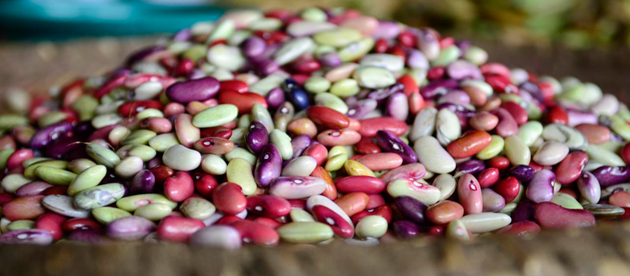Drought in Ethiopia, flooding in Pakistan, earthquake in Haiti, conflict in Congo…
Every year, the worlds’ vulnerable are hit by natural and manmade disasters, the frequency of which is set to increase, according to the latest report from the UN’s Intergovernmental Panel for Climate Change (IPCC) into the impact of climate change.
Urgent action to mitigate and adapt to the effects of climate change on agriculture is paramount to reducing its impact on food security and production. But so too is ensuring vulnerable farmers are able to recover when disaster strikes or when on-going stresses, such as drought, plague them year after year.
That is, not only ensuring farmers have access to seed, but ensuring they have access to the right seed.
Studies show that this important difference can make or break a farmers’ ability to pull through in times of stress. And yet, since the 1990s, the default emergency agricultural response has been to offer seed aid shaped not necessarily by need encountered on the ground, but rather by institutional philosophy.
At best, this cavalier approach may have little impact, at worst (and evidence has proven time and again) it can pose real threats to farmers, providing the wrong crop variety for the area, inadvertently introducing new pests or diseases, or giving long-maturing varieties when fast-maturing ones are vitally needed. Not to mention making assumptions about local seed systems that aren’t necessarily true.
Fortunately, research into seed systems during times of stress has advanced rapidly in recent years and new tools, guidance and resources are now available enabling aid agencies to re-think their agricultural aid strategies and respond according to the latest evidence-based research.
These tools and resources have been pooled together into a one stop website – seedsystem.org – by a coalition of national and international organisations. They aim to help donors, program managers and those on the front line decide how to respond appropriately to seed system constraints for the benefit, not detriment, of vulnerable farmers.
The site includes practical (‘how-to’) guidance and strategic thinking to help professionals design seed-related assistance including:
- Practical advice giving guidance on themes needing real time response: should we introduce new varieties just after a disaster (and what about hybrids?)? How can we support and not undermine the local seed markets? Is seed quality an issue?
- Assessment tools to help field staff identify seed security constraints and opportunities for the upcoming agricultural season and several to come.
- Field assessments and evaluations serve as clear guides for action planning — and as baselines against which to measure aid effectiveness.
- Policy resources tackle the emerging issues in seed security program design: how should system resilience be promoted? How can seed security response be linked to nutritional gains?
If the IPCC report is right, the question for farmers, especially those in the tropics, is not if they will be hit by disaster but when. And how prepared global emergency aid efforts and developmental organizations are to respond adequately to their needs and support the recovery and strengthening of agricultural systems.
SeedSystem.org is a collaboration among national and international organizations aiming to improve seed security in high-stress and vulnerable areas across the world. Founding partners are: The International Center for Tropical Agriculture (CIAT) and Pan-Africa Bean Research Alliance (PABRA); United States Agency for International Development (USAID); Office of U.S Foreign Disaster Assistance (OFDA); University of East Anglia School of

